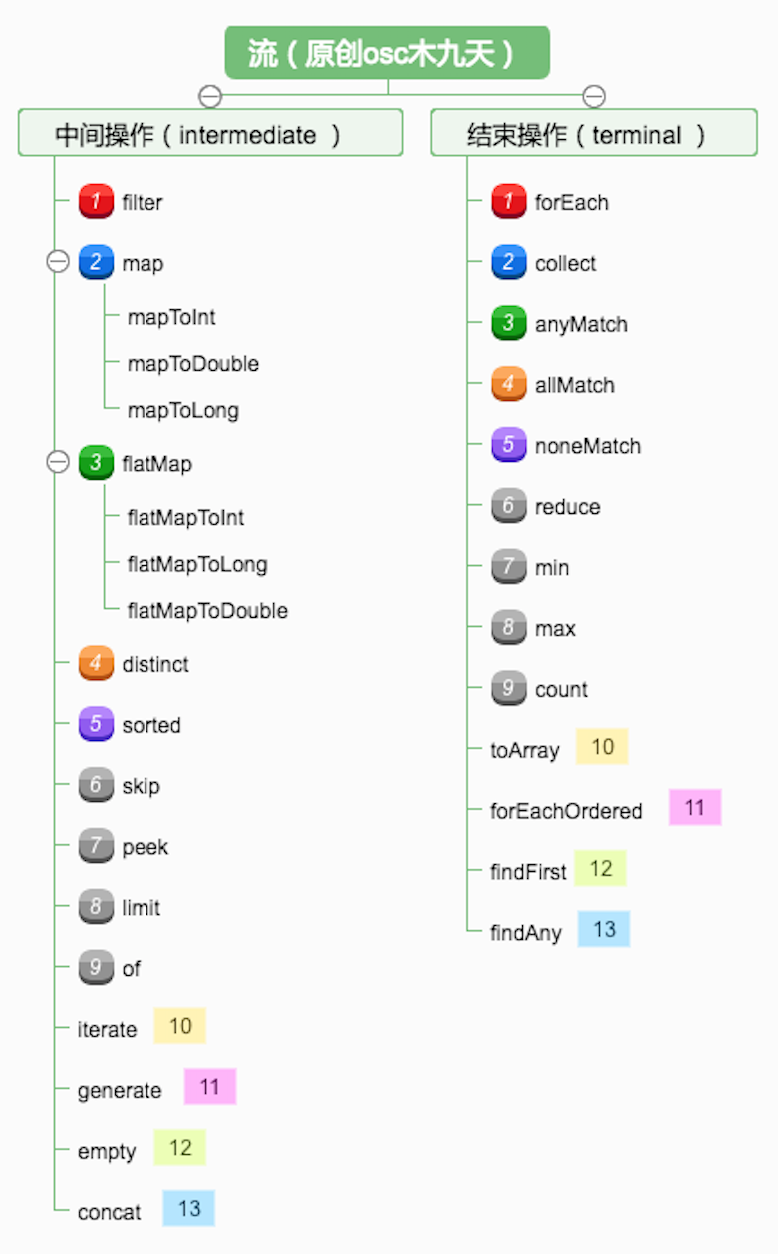жӮЁеҘҪпјҢзҷ»еҪ•еҗҺжүҚиғҪдёӢи®ўеҚ•е“ҰпјҒ
жң¬зҜҮеҶ…е®№д»Ӣз»ҚдәҶвҖңJDK8зҡ„ж–°зү№жҖ§иҜҰи§ЈвҖқзҡ„жңүе…ізҹҘиҜҶпјҢеңЁе®һйҷ…жЎҲдҫӢзҡ„ж“ҚдҪңиҝҮзЁӢдёӯпјҢдёҚе°‘дәәйғҪдјҡйҒҮеҲ°иҝҷж ·зҡ„еӣ°еўғпјҢжҺҘдёӢжқҘе°ұи®©е°Ҹзј–еёҰйўҶеӨ§е®¶еӯҰд№ дёҖдёӢеҰӮдҪ•еӨ„зҗҶиҝҷдәӣжғ…еҶөеҗ§пјҒеёҢжңӣеӨ§е®¶д»”з»Ҷйҳ…иҜ»пјҢиғҪеӨҹеӯҰжңүжүҖжҲҗпјҒ
@Data
@ToString
@NoArgsConstructor
@AllArgsConstructor
public class Student {
//еҗҚеӯ—
private String name;
//жҖ§еҲ«
private String sex;
//и–Әж°ҙ
private int salary;
//е№ҙйҫ„
private int age;
//жҳҹеә§
private String star;
}е°ҶиҝҷдёӘйӣҶеҗҲйҒҚеҺҶпјҢ然еҗҺдҫқж¬Ўзҡ„еҲӨж–ӯпјҢиҝҷжҳҜжңҖдёәжҷ®йҖҡзҡ„дёҖз§Қж–№ејҸгҖӮ
@Test
public void test1(){
//йҰ–е…ҲеҲӣе»әдёҖдёӘ
List<Student> list = Arrays.asList(
new Student("д№қеӨ©","з”·",5000,18,"еӨ©з§Өеә§"),
new Student("еҚҒеӨң","з”·",4000,16,"еҸҢйұјеә§"),
new Student("еҚҒдёҖйғҺ","з”·",3000,24,"ж°ҙ瓶еә§")
);
List<Student> result = new ArrayList<>();
for (Student student:list){
if ("еӨ©з§Өеә§".equals(student.getStar())){
result.add(student);
}
}
System.out.println(result);
}йҖҡиҝҮеҢҝеҗҚеҶ…йғЁзұ»зҡ„ж–№жі•пјҢеңЁеҶ…йғЁзұ»дёӯж·»еҠ еҲӨж–ӯжқЎд»¶иҝӣиЎҢзӯӣйҖү,йҰ–е…ҲеҲӣе»әдёҖдёӘе…¬е…ұжҺҘеҸЈпјҡ
public interface FilterProcess<T> {
boolean process(T t);
}жҺҘдёӢжқҘйҖҡиҝҮдёҖдёӘе…¬е…ұеҮҪж•°пјҢеҜ№йӣҶеҗҲд»ҘеҸҠзӯӣйҖүжқЎд»¶еҒҡдёҖдёӘе…ұеҗҢж–№жі•пјҢзӯӣйҖүеҲ°зҸӯзә§йҮҢжҳҹеә§жҳҜеӨ©з§Өжҳҹеә§зҡ„еӯҰз”ҹ
public List<Student> filterStudent(List<Student> students, FilterProcess<Student> mp){
List<Student> list = new ArrayList<>();
for (Student student : students) {
if(mp.process(student)){
list.add(student);
}
}
return list;
}жңҖеҗҺжҳҜйҖҡиҝҮеҢҝеҗҚеҶ…йғЁзұ»е’ҢиҜҘж–№жі•еҫ—еҲ°з»“жһңпјҡ
@Test
public void test2(){
List<Student> students = Arrays.asList(
new Student("д№қеӨ©","з”·",5000,18,"еӨ©з§Өеә§"),
new Student("еҚҒеӨң","з”·",4000,16,"еҸҢйұјеә§"),
new Student("еҚҒдёҖйғҺ","з”·",3000,24,"ж°ҙ瓶еә§")
);
List<Student> list = filterStudent(students, new FilterProcess<Student>() {
@Override
public boolean process(Student student) {
return student.getStar().equals("еӨ©з§Өеә§");
}
});
for (Student student : list) {
System.out.println(student);
}
}з»“жһңеҰӮеӣҫпјҡ

дҪҶжҳҜйҖҡиҝҮиҝҷдёӨз§Қд»Јз ҒйғҪжҳҜеҫҲеӨҡпјҢжүҖд»Ҙjava8еңЁиҝҷдёҖзӮ№дёҠжҸҗдҫӣдәҶеҜ№йӣҶеҗҲзӯӣйҖүжңҖеӨ§зЁӢеәҰзҡ„еҲ еҮҸд»Јз ҒпјҢе°ұжҳҜ第дёүз§Қж–№жі•гҖӮ第дёүз§Қж–№жі•пјҡйҖҡиҝҮLambdaзӣҙжҺҘеҲӨж–ӯпјҢдёҖжӯҘеҲ°дҪҚпјҢдёҚйңҖиҰҒеңЁеҶҷе…¶д»–зҡ„ж–№жі•гҖӮ
@Test
public void test3(){
List<Student> list = Arrays.asList(
new Student("д№қеӨ©","з”·",5000,18,"еӨ©з§Өеә§"),
new Student("еҚҒеӨң","з”·",4000,16,"еҸҢйұјеә§"),
new Student("еҚҒдёҖйғҺ","з”·",3000,24,"ж°ҙ瓶еә§")
);
List<Student> result = filterStudent(list,(e)->e.getStar().equals("еӨ©з§Өеә§"));
System.out.println(result);
}жөӢиҜ•з»“жһңпјҡ
[Student(name=д№қеӨ©, sex=з”·, salary=5000, age=18, star=еӨ©з§Өеә§)]
дҪҶжҳҜзҺ°еңЁеҸҲдјҡжңүдәәдјҡй—®иҝҷдёӘй—®йўҳпјҢжҲ‘зҡ„йӮЈдёӘж–№жі•дёӯжҳҜиҝҷж ·еӯҗзҡ„
filterStudent(List<Student> students, FilterProcess<Student> mp)
дёәд»Җд№ҲжҲ‘зҡ„д»Јз ҒеҸӮж•°еҚҙжҳҜиҝҷж ·еӯҗзҡ„е‘ў
filterStudent(list,(e)->e.getStar().equals("еӨ©з§Өеә§")е…¶е®һ -> иҝҷдёӘжҳҜдёҖдёӘиҝһжҺҘз¬ҰпјҢе·Ұиҫ№д»ЈиЎЁеҸӮж•°пјҢиҖҢеҸіиҫ№д»ЈиЎЁеҮҪж•°дҪ“пјҲд№ҹе°ұжҳҜжҲ‘们иҜҙзҡ„жқЎд»¶пјүпјҢиҝҷдёӘeе°ұжҳҜд»ЈиЎЁ FilterProcess<Student> mp иҝҷдёӘеҸӮж•°зҡ„пјҢеҸӘдёҚиҝҮжҲ‘们еҫ—java8 дёӯlambdaеҸҜд»Ҙз»ҷиҝҷдёӘеҸӮж•°йҷ„еҠ дёҠдәҶжқЎд»¶пјҢиҝҷдәӣжқЎд»¶зӯӣйҖүйғҪжҳҜе°ҒиЈ…еҲ°jdk8дёӯеҶ…йғЁзұ»дёӯиҮӘе·ұе®һзҺ°зҡ„пјҢжүҖд»ҘжҲ‘们еҸӘиҰҒйҷ„еҠ жқЎд»¶е°ұеҸҜд»ҘдәҶпјҢйӮЈдёӘ(e)е°ұд»ЈиЎЁдј дәҶеҸӮж•°гҖӮ
@Test
public void test1() {
List<Student> list = Arrays.asList(
new Student("д№қеӨ©","з”·",5000,18,"еӨ©з§Өеә§"),
new Student("еҚҒеӨң","з”·",4000,16,"еҸҢйұјеә§"),
new Student("еҚҒдёҖйғҺ","з”·",3000,24,"ж°ҙ瓶еә§")
);
list.stream().filter((e) -> e.getStar().equals("еӨ©з§Өеә§"))
.forEach(System.out::println);
}з»“жһңдҫқ然жҳҜзӣёеҗҢзҡ„зӯ”жЎҲпјҢзӣҙеҲ°з¬¬4дёӘж–№жі•еҮәжқҘпјҢеҜ№жҜ”еүҚдёүдёӘж–№жі•пјҢз®ҖеҚ•дәҶеҫҲеӨҡпјҢиҝҷе°ұжҳҜжҲ‘们lambdaжј”з»ғзҡ„иҝҮзЁӢгҖӮ
жҖ»з»“пјҡlambdaдё»иҰҒжҳҜй’ҲеҜ№йӣҶеҗҲдёӯжқЎд»¶зҡ„зӯӣйҖүпјҢеҢ…жӢ¬ж•°з»„зӯүзӯүгҖӮжҺҘдёӢжқҘжҲ‘们д»Ӣз»ҚStream API ,иҝҷдёӘе’ҢLambdaжҒҜжҒҜзӣёе…іпјҢи®әйҮҚиҰҒжҖ§пјҢlambdaеҸӘжҳҜеҹәзЎҖпјҢStream API жүҚжҳҜзңҹжӯЈзҡ„еҚҮзә§зүҲ

зҲ¶зұ»пјҡBasicStream
еӯҗзұ»пјҡStreamгҖҒIntStreamгҖҒLongStreamгҖҒDoubleStream
еҢ…еҗ«дёӨдёӘзұ»еһӢпјҢдёӯй—ҙж“ҚдҪң(intermediate operations)е’Ңз»“жқҹж“ҚдҪң(terminal operations)
дёӢйқўжҳҜжүҖжңүж–№жі•зҡ„еұһдәҺйӮЈдёҖз«Ҝж“ҚдҪңзҡ„ж–№жі•пјҡ

然еҗҺеҮҶеӨҮдёҖдёӘжөӢиҜ•зұ»пјҢе’ҢдёҖдёӘйқҷжҖҒеҸҳйҮҸпјҢеӣҫдёӢпјҡ
public class JdkTest {
public static List<Student> list = Arrays.asList(
new Student("д№қеӨ©", "з”·", 5000, 18, "еӨ©з§Өеә§"),
new Student("еҚҒеӨң", "з”·", 4000, 16, "еҸҢйұјеә§"),
new Student("еҚҒдёҖйғҺ", "з”·", 3000, 24, "ж°ҙ瓶еә§")
);
}жҺҘдёӢжқҘжҲ‘们дёҖдёӘдёҖдёӘж–№жі•и§Јжһҗ他们зҡ„дҪңз”Ё
е°ҶйӣҶеҗҲиҪ¬жҚўжҲҗжөҒ,дёҖиҲ¬дјҡдҪҝз”ЁжөҒ继з»ӯеҗҺз»ӯж“ҚдҪңгҖӮ
@Test
public void test0() {
list.stream();
}forEachйҒҚеҺҶйӣҶеҗҲпјҢSystem.out::printlnзӯүеҗҢдәҺSystem.out.println()
@Test
public void test1() {
list.forEach(System.out::println);
}з»“жһңдёәпјҡ

иҜҘж–№жі•дёӯжҳҜдёҖдёӘзӯӣйҖүжқЎд»¶пјҢзӯүеҗҢдәҺsqlжҹҘиҜўзҡ„whereеҗҺйқўзҡ„зӯӣйҖүгҖӮ
@Test
public void test2() {
list.stream().filter((e) -> e.getStar().equals("еӨ©з§Өеә§"))
.forEach(System.out::println);
} 
е°ҶList<Student> иҪ¬жҚўдёәList<String>, collectжҳҜе°Ҷз»“жһңиҪ¬жҚўдёәList
@Test
public void test3() {
List<String> names = list.stream().map(Student::getName).collect(Collectors.toList());
names.stream().forEach(System.out::println);
}з»“жһңпјҡ

иҪ¬жҚўж•°еҖјжөҒпјҢзӯүеҗҢmapToLongгҖҒmapToDoubleпјҢеҰӮдёӢиҝҷдёӘжҳҜеҸ–жңҖеӨ§еҖј
@Test
public void test4() {
IntStream intStream = list.stream().mapToInt(Student::getAge);
Stream<Integer> integerStream = intStream.boxed();
Optional<Integer> max = integerStream.max(Integer::compareTo);
System.out.println(max.get());
}з»“жһңдёәпјҡ
24
е°ҶжөҒдёӯзҡ„жҜҸдёҖдёӘе…ғзҙ T жҳ е°„дёәдёҖдёӘжөҒпјҢеҶҚжҠҠжҜҸдёҖдёӘжөҒиҝһжҺҘжҲҗдёәдёҖдёӘжөҒ
@Test
public void test5() {
List<String> list2 = new ArrayList<>();
list2.add("aaa bbb ccc");
list2.add("ddd eee fff");
list2.add("ggg hhh iii");
list2 = list2.stream().map(s -> s.split(" ")).flatMap(Arrays::stream).collect(Collectors.toList());
System.out.println(list2);
}з»“жһңдёәпјҡ
[aaa, bbb, ccc, ddd, eee, fff, ggg, hhh, iii]
@Test
public void test6() {
List<String> list2 = new ArrayList<>();
list2.add("aaa bbb ccc");
list2.add("ddd eee fff");
list2.add("ggg hhh iii");
list2.add("ggg hhh iii");
list2.stream().distinct().forEach(System.out::println);
}з»“жһңпјҡ
aaa bbb ccc ddd eee fff ggg hhh iii
@Test
public void test7() {
//ascжҺ’еәҸ
list.stream().sorted(Comparator.comparingInt(Student::getAge)).forEach(System.out::println);
System.out.println("------------------------------------------------------------------");
//descжҺ’еәҸ
list.stream().sorted(Comparator.comparingInt(Student::getAge).reversed()).forEach(System.out::println);
}з»“жһңпјҡ
Student(name=еҚҒеӨң, sex=з”·, salary=4000, age=16, star=еҸҢйұјеә§) Student(name=д№қеӨ©, sex=з”·, salary=5000, age=18, star=еӨ©з§Өеә§) Student(name=еҚҒдёҖйғҺ, sex=з”·, salary=3000, age=24, star=ж°ҙ瓶еә§) ------------------------------------------------------------------ Student(name=еҚҒдёҖйғҺ, sex=з”·, salary=3000, age=24, star=ж°ҙ瓶еә§) Student(name=д№қеӨ©, sex=з”·, salary=5000, age=18, star=еӨ©з§Өеә§) Student(name=еҚҒеӨң, sex=з”·, salary=4000, age=16, star=еҸҢйұјеә§)
@Test
public void test8() {
list.stream().skip(1).forEach(System.out::println);
}@Test
public void test10() {
list.stream().limit(1).forEach(System.out::println);
}з»“жһңдёәпјҡ
Student(name=д№қеӨ©, sex=з”·, salary=5000, age=18, star=еӨ©з§Өеә§)
еҸӘиҰҒжңүе…¶дёӯд»»ж„ҸдёҖдёӘз¬ҰеҗҲжқЎд»¶
@Test
public void test11() {
boolean isHave = list.stream().anyMatch(student -> student.getAge() == 16);
System.out.println(isHave);
}е…ЁйғЁз¬ҰеҗҲ
@Test
public void test12() {
boolean isHave = list.stream().allMatch(student -> student.getAge() == 16);
System.out.println(isHave);
}жҳҜеҗҰж»Ўи¶іжІЎжңүз¬ҰеҗҲзҡ„
@Test
public void test13() {
boolean isHave = list.stream().noneMatch(student -> student.getAge() == 16);
System.out.println(isHave);
}жүҫеҲ°е…¶дёӯдёҖдёӘе…ғзҙ пјҲдҪҝз”Ё stream() ж—¶жүҫеҲ°зҡ„жҳҜ第дёҖдёӘе…ғзҙ пјӣдҪҝз”Ё parallelStream() 并иЎҢж—¶жүҫеҲ°зҡ„жҳҜе…¶дёӯдёҖдёӘе…ғзҙ пјү
@Test
public void test14() {
Optional<Student> student = list.stream().findAny();
System.out.println(student.get());
}жүҫеҲ°з¬¬дёҖдёӘе…ғзҙ
@Test
public void test15() {
Optional<Student> student = list.stream().findFirst();
System.out.println(student.get());
}2.17гҖҒcountи®Ўж•°
@Test
public void test17() {
long count = list.stream().count();
System.out.println(count);
}з”ҹжҲҗдёҖдёӘеӯ—з¬ҰдёІжөҒ
@Test
public void test18() {
Stream<String> stringStream = Stream.of("i","love","you");
}з”ҹжҲҗдёҖдёӘз©әжөҒ
@Test
public void test19() {
Stream<String> stringStream = Stream.empty();
}@Test
public void test20() {
List<String> list = Arrays.asList("a", "b", "c", "c", "d", "f", "a");
Stream.iterate(0, i -> i + 1).limit(list.size()).forEach(i -> {
System.out.println(String.valueOf(i) + list.get(i));
});
}1гҖҒжүҖжңүзҡ„ж—Ҙжңҹзұ»йғҪжҳҜеҸҜеҸҳзҡ„пјҢеӣ жӯӨ他们йғҪдёҚжҳҜзәҝзЁӢе®үе…Ёзҡ„пјҢиҝҷжҳҜJavaж—Ҙжңҹзұ»жңҖеӨ§зҡ„й—®йўҳд№ӢдёҖ 2гҖҒJavaзҡ„ж—Ҙжңҹ/ж—¶й—ҙзұ»зҡ„е®ҡд№ү并дёҚдёҖиҮҙпјҢеңЁjava.utilе’Ңjava.sqlзҡ„еҢ…дёӯйғҪжңүж—Ҙжңҹзұ»пјҢжӯӨеӨ–з”ЁдәҺж јејҸеҢ–е’Ңи§Јжһҗзҡ„зұ»еңЁjava.textеҢ…дёӯе®ҡд№ү 3гҖҒjava.util.DateеҗҢж—¶еҢ…еҗ«ж—Ҙжңҹе’Ңж—¶й—ҙпјҢиҖҢjava.sql.Dateд»…еҢ…еҗ«ж—ҘжңҹпјҢе°Ҷе…¶зәіе…Ҙjava.sqlеҢ…并дёҚеҗҲзҗҶгҖӮеҸҰеӨ–иҝҷдёӨдёӘзұ»йғҪжңүзӣёеҗҢзҡ„еҗҚеӯ—пјҢиҝҷжң¬иә«е°ұжҳҜдёҖдёӘйқһеёёзіҹзі•зҡ„и®ҫи®ЎгҖӮеҜ№дәҺж—¶й—ҙгҖҒж—¶й—ҙжҲігҖҒж јејҸеҢ–д»ҘеҸҠи§ЈжһҗпјҢ并没жңүдёҖдәӣжҳҺзЎ®е®ҡд№үзҡ„зұ»гҖӮеҜ№дәҺж јејҸеҢ–е’Ңи§Јжһҗзҡ„йңҖжұӮпјҢжҲ‘们жңүjava.text.DateFormatжҠҪиұЎзұ»пјҢдҪҶйҖҡеёёжғ…еҶөдёӢпјҢSimpleDateFormatзұ»иў«з”ЁдәҺжӯӨзұ»йңҖжұӮ 4гҖҒж—Ҙжңҹзұ»е№¶дёҚжҸҗдҫӣеӣҪйҷ…еҢ–пјҢжІЎжңүж—¶еҢәж”ҜжҢҒпјҢеӣ жӯӨJavaеј•е…ҘдәҶjava.util.Calendarе’Ңjava.util.TimeZoneзұ»пјҢдҪҶ他们еҗҢж ·еӯҳеңЁдёҠиҝ°жүҖжңүзҡ„й—®йўҳ
1гҖҒдёҚеҸҳжҖ§пјҡж–°зҡ„ж—Ҙжңҹ/ж—¶й—ҙAPIдёӯпјҢжүҖжңүзҡ„зұ»йғҪжҳҜдёҚеҸҜеҸҳзҡ„пјҢиҝҷеҜ№еӨҡзәҝзЁӢзҺҜеўғжңүеҘҪеӨ„гҖӮ 2гҖҒе…іжіЁзӮ№еҲҶзҰ»пјҡж–°зҡ„APIе°ҶдәәеҸҜиҜ»зҡ„ж—Ҙжңҹж—¶й—ҙе’ҢжңәеҷЁж—¶й—ҙпјҲunix timestampпјүжҳҺзЎ®еҲҶзҰ»пјҢе®ғдёәж—ҘжңҹпјҲDateпјүгҖҒж—¶й—ҙпјҲTimeпјүгҖҒж—Ҙжңҹж—¶й—ҙпјҲDateTimeпјүгҖҒж—¶й—ҙжҲіпјҲunix timestampпјүд»ҘеҸҠж—¶еҢәе®ҡд№үдәҶдёҚеҗҢзҡ„зұ»гҖӮ 3гҖҒжё…жҷ°пјҡеңЁжүҖжңүзҡ„зұ»дёӯпјҢж–№жі•йғҪиў«жҳҺзЎ®е®ҡд№үз”Ёд»Ҙе®ҢжҲҗзӣёеҗҢзҡ„иЎҢдёәгҖӮдёҫдёӘдҫӢеӯҗпјҢиҰҒжӢҝеҲ°еҪ“еүҚе®һдҫӢжҲ‘们еҸҜд»ҘдҪҝз”Ёnow()ж–№жі•пјҢеңЁжүҖжңүзҡ„зұ»дёӯйғҪе®ҡд№үдәҶformat()е’Ңparse()ж–№жі•пјҢиҖҢдёҚжҳҜеғҸд»ҘеүҚйӮЈж ·дё“й—ЁжңүдёҖдёӘзӢ¬з«Ӣзҡ„зұ»гҖӮдёәдәҶжӣҙеҘҪзҡ„еӨ„зҗҶй—®йўҳпјҢжүҖжңүзҡ„зұ»йғҪдҪҝз”ЁдәҶе·ҘеҺӮжЁЎејҸе’Ңзӯ–з•ҘжЁЎејҸпјҢдёҖж—ҰдҪ дҪҝз”ЁдәҶе…¶дёӯжҹҗдёӘзұ»зҡ„ж–№жі•пјҢдёҺе…¶д»–зұ»еҚҸеҗҢе·ҘдҪң并дёҚеӣ°йҡҫгҖӮ 4гҖҒе®һз”Ёж“ҚдҪңпјҡжүҖжңүж–°зҡ„ж—Ҙжңҹ/ж—¶й—ҙAPIзұ»йғҪе®һзҺ°дәҶдёҖзі»еҲ—ж–№жі•з”Ёд»Ҙе®ҢжҲҗйҖҡз”Ёзҡ„д»»еҠЎпјҢеҰӮпјҡеҠ гҖҒеҮҸгҖҒж јејҸеҢ–гҖҒи§ЈжһҗгҖҒд»Һж—Ҙжңҹ/ж—¶й—ҙдёӯжҸҗеҸ–еҚ•зӢ¬йғЁеҲҶпјҢзӯүзӯүгҖӮ 5гҖҒеҸҜжү©еұ•жҖ§пјҡж–°зҡ„ж—Ҙжңҹ/ж—¶й—ҙAPIжҳҜе·ҘдҪңеңЁISO-8601ж—ҘеҺҶзі»з»ҹдёҠзҡ„пјҢдҪҶжҲ‘们д№ҹеҸҜд»Ҙе°Ҷе…¶еә”з”ЁеңЁйқһIOSзҡ„ж—ҘеҺҶдёҠгҖӮ
Java.timeеҢ…дёӯзҡ„жҳҜзұ»жҳҜдёҚеҸҜеҸҳдё”зәҝзЁӢе®үе…Ёзҡ„гҖӮж–°зҡ„ж—¶й—ҙеҸҠж—ҘжңҹAPIдҪҚдәҺjava.timeдёӯпјҢjava8 timeеҢ…дёӢе…ій”®еӯ—ж®өи§ЈиҜ»гҖӮ
| еұһжҖ§ | еҗ«д№ү |
| Instant | д»ЈиЎЁзҡ„жҳҜж—¶й—ҙжҲі |
| LocalDate | д»ЈиЎЁж—ҘжңҹпјҢжҜ”еҰӮ2020-01-14 |
| LocalTime | д»ЈиЎЁж—¶еҲ»пјҢжҜ”еҰӮ12:59:59 |
| LocalDateTime | д»ЈиЎЁе…·дҪ“ж—¶й—ҙ 2020-01-12 12:22:26 |
| ZonedDateTime | д»ЈиЎЁдёҖдёӘеҢ…еҗ«ж—¶еҢәзҡ„е®Ңж•ҙзҡ„ж—Ҙжңҹж—¶й—ҙпјҢеҒҸ移йҮҸжҳҜд»ҘUTC/ ж јжһ—еЁҒжІ»ж—¶й—ҙдёәеҹәеҮҶзҡ„ |
| Period | д»ЈиЎЁж—¶й—ҙж®ө |
| ZoneOffset | д»ЈиЎЁж—¶еҢәеҒҸ移йҮҸпјҢжҜ”еҰӮпјҡ+8:00 |
| Clock | д»ЈиЎЁж—¶й’ҹпјҢжҜ”еҰӮиҺ·еҸ–зӣ®еүҚзҫҺеӣҪзәҪзәҰзҡ„ж—¶й—ҙ |
Instant instant = Instant.now(); //иҺ·еҸ–еҪ“еүҚж—¶й—ҙжҲі LocalDate localDate = LocalDate.now(); //иҺ·еҸ–еҪ“еүҚж—Ҙжңҹ LocalTime localTime = LocalTime.now(); //иҺ·еҸ–еҪ“еүҚж—¶еҲ» LocalDateTime localDateTime = LocalDateTime.now(); //иҺ·еҸ–еҪ“еүҚе…·дҪ“ж—¶й—ҙ ZonedDateTime zonedDateTime = ZonedDateTime.now(); //иҺ·еҸ–еёҰжңүж—¶еҢәзҡ„ж—¶й—ҙ
jdk8пјҡ
String str = "2019-01-11";
DateTimeFormatter formatter = DateTimeFormatter.ofPattern("yyyy-MM-dd");
LocalDate localDate = LocalDate.parse(str, formatter);
jdk7:
SimpleDateFormat simpleDateFormat = new SimpleDateFormat("yyyy-MM-dd");
try {
Date date = simpleDateFormat.parse(str);
} catch (ParseException e){
e.printStackTrace();
}import java.time.Instant;
import java.time.LocalDate;
import java.time.ZoneId;
import java.util.Date;
public class Test {
public static void main(String[] args) {
Date date = new Date();
Instant instant = date.toInstant();
ZoneId zoneId = ZoneId.systemDefault();
// atZone()ж–№жі•иҝ”еӣһеңЁжҢҮе®ҡж—¶еҢәд»ҺжӯӨInstantз”ҹжҲҗзҡ„ZonedDateTimeгҖӮ
LocalDate localDate = instant.atZone(zoneId).toLocalDate();
System.out.println("Date = " + date);
System.out.println("LocalDate = " + localDate);
}
}import java.time.LocalDate;
import java.time.ZoneId;
import java.time.ZonedDateTime;
import java.util.Date;
public class Test {
public static void main(String[] args) {
ZoneId zoneId = ZoneId.systemDefault();
LocalDate localDate = LocalDate.now();
ZonedDateTime zdt = localDate.atStartOfDay(zoneId);
Date date = Date.from(zdt.toInstant());
System.out.println("LocalDate = " + localDate);
System.out.println("Date = " + date);
}
}long timestamp = System.currentTimeMillis(); Instant instant = Instant.ofEpochMilli(timestamp); LocalDateTime.ofInstant(instant, ZoneId.systemDefault());
LocalDateTime dateTime = LocalDateTime.now();
dateTime.toInstant(ZoneOffset.ofHours(8)).toEpochMilli();
dateTime.toInstant(ZoneOffset.of("+08:00")).toEpochMilli();
dateTime.atZone(ZoneId.systemDefault()).toInstant().toEpochMilli();getYear() int иҺ·еҸ–еҪ“еүҚж—Ҙжңҹзҡ„е№ҙд»Ҫ getMonth() Month иҺ·еҸ–еҪ“еүҚж—Ҙжңҹзҡ„жңҲд»ҪеҜ№иұЎ getMonthValue() int иҺ·еҸ–еҪ“еүҚж—ҘжңҹжҳҜ第еҮ жңҲ getDayOfWeek() DayOfWeek иЎЁзӨәиҜҘеҜ№иұЎиЎЁзӨәзҡ„ж—ҘжңҹжҳҜжҳҹжңҹеҮ getDayOfMonth() int иЎЁзӨәиҜҘеҜ№иұЎиЎЁзӨәзҡ„ж—ҘжңҹжҳҜиҝҷдёӘжңҲ第еҮ еӨ© getDayOfYear() int иЎЁзӨәиҜҘеҜ№иұЎиЎЁзӨәзҡ„ж—ҘжңҹжҳҜд»Ҡе№ҙ第еҮ еӨ© withYear(int year) LocalDate дҝ®ж”№еҪ“еүҚеҜ№иұЎзҡ„е№ҙд»Ҫ withMonth(int month) LocalDate дҝ®ж”№еҪ“еүҚеҜ№иұЎзҡ„жңҲд»Ҫ withDayOfMonth(intdayOfMonth) LocalDate дҝ®ж”№еҪ“еүҚеҜ№иұЎеңЁеҪ“жңҲзҡ„ж—Ҙжңҹ isLeapYear() boolean жҳҜеҗҰжҳҜй—°е№ҙ lengthOfMonth() int иҝҷдёӘжңҲжңүеӨҡе°‘еӨ© lengthOfYear() int иҜҘеҜ№иұЎиЎЁзӨәзҡ„е№ҙд»ҪжңүеӨҡе°‘еӨ©пјҲ365жҲ–иҖ…366пјү plusYears(longyearsToAdd) LocalDate еҪ“еүҚеҜ№иұЎеўһеҠ жҢҮе®ҡзҡ„е№ҙд»Ҫж•° plusMonths(longmonthsToAdd) LocalDate еҪ“еүҚеҜ№иұЎеўһеҠ жҢҮе®ҡзҡ„жңҲд»Ҫж•° plusWeeks(longweeksToAdd) LocalDate еҪ“еүҚеҜ№иұЎеўһеҠ жҢҮе®ҡзҡ„е‘Ёж•° plusDays(longdaysToAdd) LocalDate еҪ“еүҚеҜ№иұЎеўһеҠ жҢҮе®ҡзҡ„еӨ©ж•° minusYears(longyearsToSubtract) LocalDate еҪ“еүҚеҜ№иұЎеҮҸеҺ»жҢҮе®ҡзҡ„е№ҙж•° minusMonths(longmonthsToSubtract) LocalDate еҪ“еүҚеҜ№иұЎеҮҸеҺ»жіЁе®ҡзҡ„жңҲж•° minusWeeks(longweeksToSubtract) LocalDate еҪ“еүҚеҜ№иұЎеҮҸеҺ»жҢҮе®ҡзҡ„е‘Ёж•° minusDays(longdaysToSubtract) LocalDate еҪ“еүҚеҜ№иұЎеҮҸеҺ»жҢҮе®ҡзҡ„еӨ©ж•° compareTo(ChronoLocalDateother) int жҜ”иҫғеҪ“еүҚеҜ№иұЎе’ҢotherеҜ№иұЎеңЁж—¶й—ҙдёҠзҡ„еӨ§е°ҸпјҢиҝ”еӣһеҖјеҰӮжһңдёәжӯЈпјҢеҲҷеҪ“еүҚеҜ№иұЎж—¶й—ҙиҫғжҷҡпјҢ isBefore(ChronoLocalDateother) boolean жҜ”иҫғеҪ“еүҚеҜ№иұЎж—ҘжңҹжҳҜеҗҰеңЁotherеҜ№иұЎж—Ҙжңҹд№ӢеүҚ isAfter(ChronoLocalDateother) boolean жҜ”иҫғеҪ“еүҚеҜ№иұЎж—ҘжңҹжҳҜеҗҰеңЁotherеҜ№иұЎж—Ҙжңҹд№ӢеҗҺ isEqual(ChronoLocalDateother) boolean жҜ”иҫғдёӨдёӘж—ҘжңҹеҜ№иұЎжҳҜеҗҰзӣёзӯү
вҖңJDK8зҡ„ж–°зү№жҖ§иҜҰи§ЈвҖқзҡ„еҶ…е®№е°ұд»Ӣз»ҚеҲ°иҝҷйҮҢдәҶпјҢж„ҹи°ўеӨ§е®¶зҡ„йҳ…иҜ»гҖӮеҰӮжһңжғідәҶи§ЈжӣҙеӨҡиЎҢдёҡзӣёе…ізҡ„зҹҘиҜҶеҸҜд»Ҙе…іжіЁдәҝйҖҹдә‘зҪ‘з«ҷпјҢе°Ҹзј–е°ҶдёәеӨ§е®¶иҫ“еҮәжӣҙеӨҡй«ҳиҙЁйҮҸзҡ„е®һз”Ёж–Үз« пјҒ
е…ҚиҙЈеЈ°жҳҺпјҡжң¬з«ҷеҸ‘еёғзҡ„еҶ…е®№пјҲеӣҫзүҮгҖҒи§Ҷйў‘е’Ңж–Үеӯ—пјүд»ҘеҺҹеҲӣгҖҒиҪ¬иҪҪе’ҢеҲҶдә«дёәдё»пјҢж–Үз« и§ӮзӮ№дёҚд»ЈиЎЁжң¬зҪ‘з«ҷз«ӢеңәпјҢеҰӮжһңж¶үеҸҠдҫөжқғиҜ·иҒ”зі»з«ҷй•ҝйӮ®з®ұпјҡis@yisu.comиҝӣиЎҢдёҫжҠҘпјҢ并жҸҗдҫӣзӣёе…іиҜҒжҚ®пјҢдёҖз»ҸжҹҘе®һпјҢе°Ҷз«ӢеҲ»еҲ йҷӨж¶үе«ҢдҫөжқғеҶ…е®№гҖӮ
жӮЁеҘҪпјҢзҷ»еҪ•еҗҺжүҚиғҪдёӢи®ўеҚ•е“ҰпјҒ